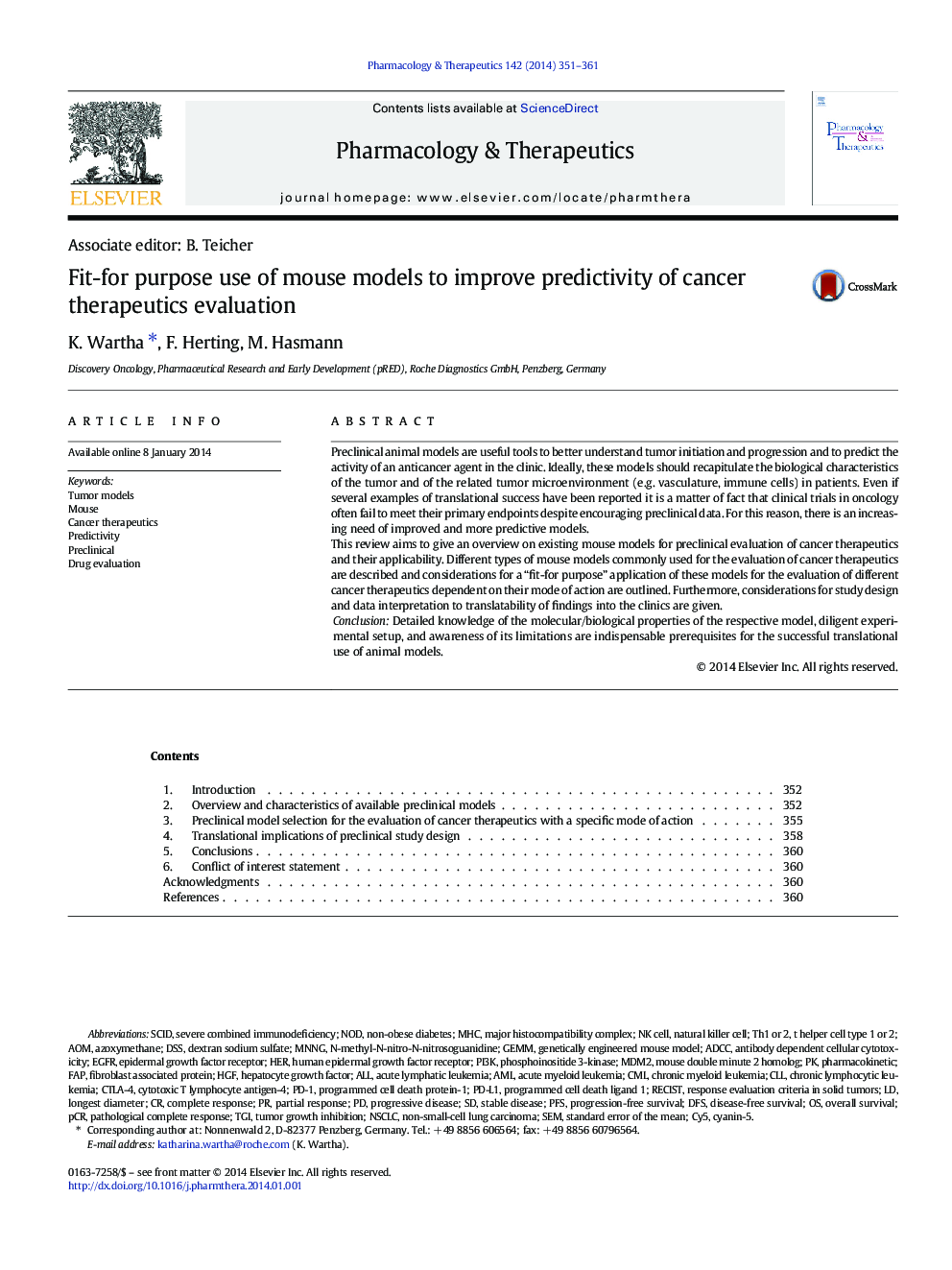| کد مقاله | کد نشریه | سال انتشار | مقاله انگلیسی | نسخه تمام متن |
|---|---|---|---|---|
| 2563194 | 1127501 | 2014 | 11 صفحه PDF | دانلود رایگان |
Preclinical animal models are useful tools to better understand tumor initiation and progression and to predict the activity of an anticancer agent in the clinic. Ideally, these models should recapitulate the biological characteristics of the tumor and of the related tumor microenvironment (e.g. vasculature, immune cells) in patients. Even if several examples of translational success have been reported it is a matter of fact that clinical trials in oncology often fail to meet their primary endpoints despite encouraging preclinical data. For this reason, there is an increasing need of improved and more predictive models.This review aims to give an overview on existing mouse models for preclinical evaluation of cancer therapeutics and their applicability. Different types of mouse models commonly used for the evaluation of cancer therapeutics are described and considerations for a “fit-for purpose” application of these models for the evaluation of different cancer therapeutics dependent on their mode of action are outlined. Furthermore, considerations for study design and data interpretation to translatability of findings into the clinics are given.ConclusionDetailed knowledge of the molecular/biological properties of the respective model, diligent experimental setup, and awareness of its limitations are indispensable prerequisites for the successful translational use of animal models.
Journal: Pharmacology & Therapeutics - Volume 142, Issue 3, June 2014, Pages 351–361
